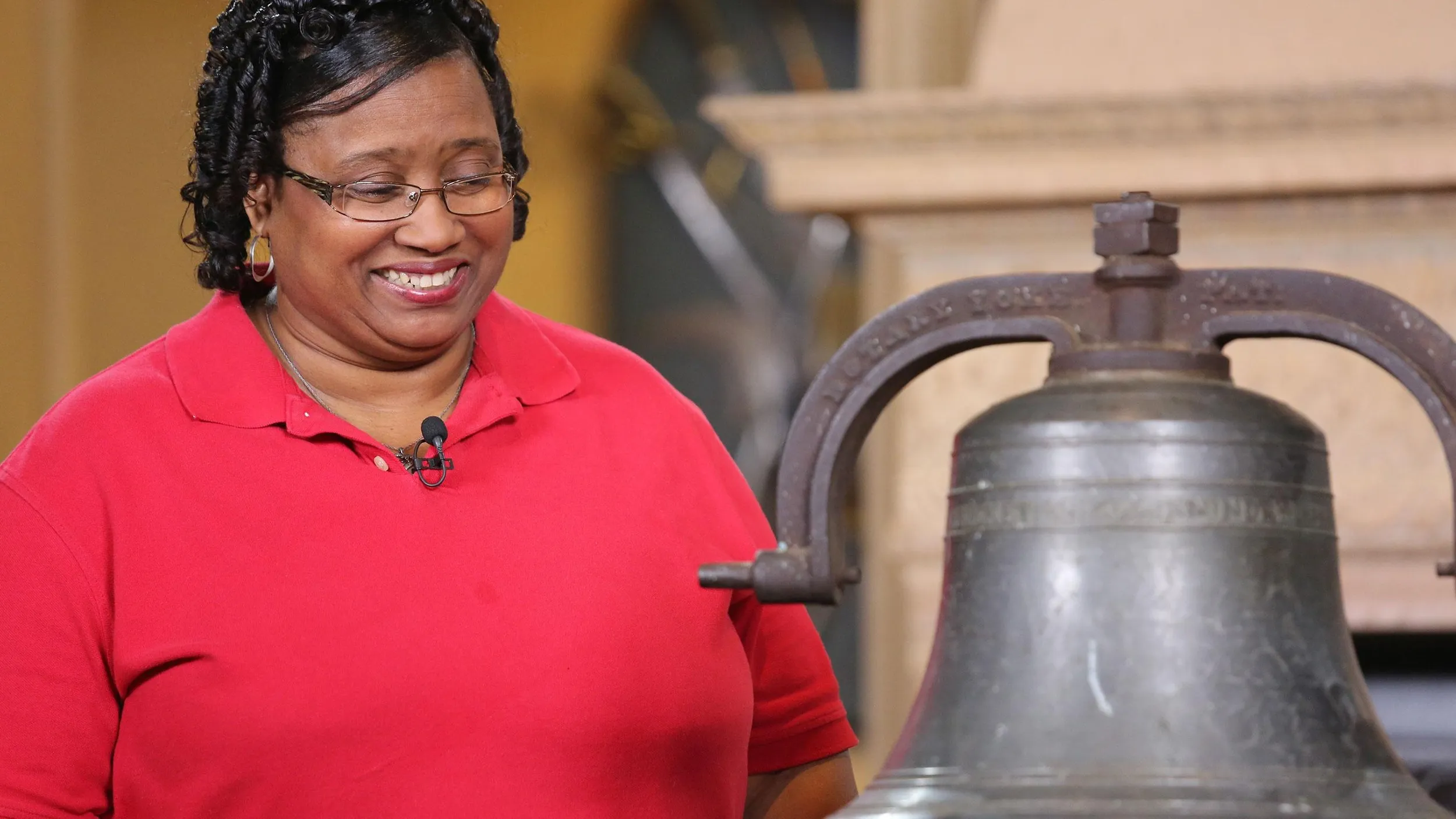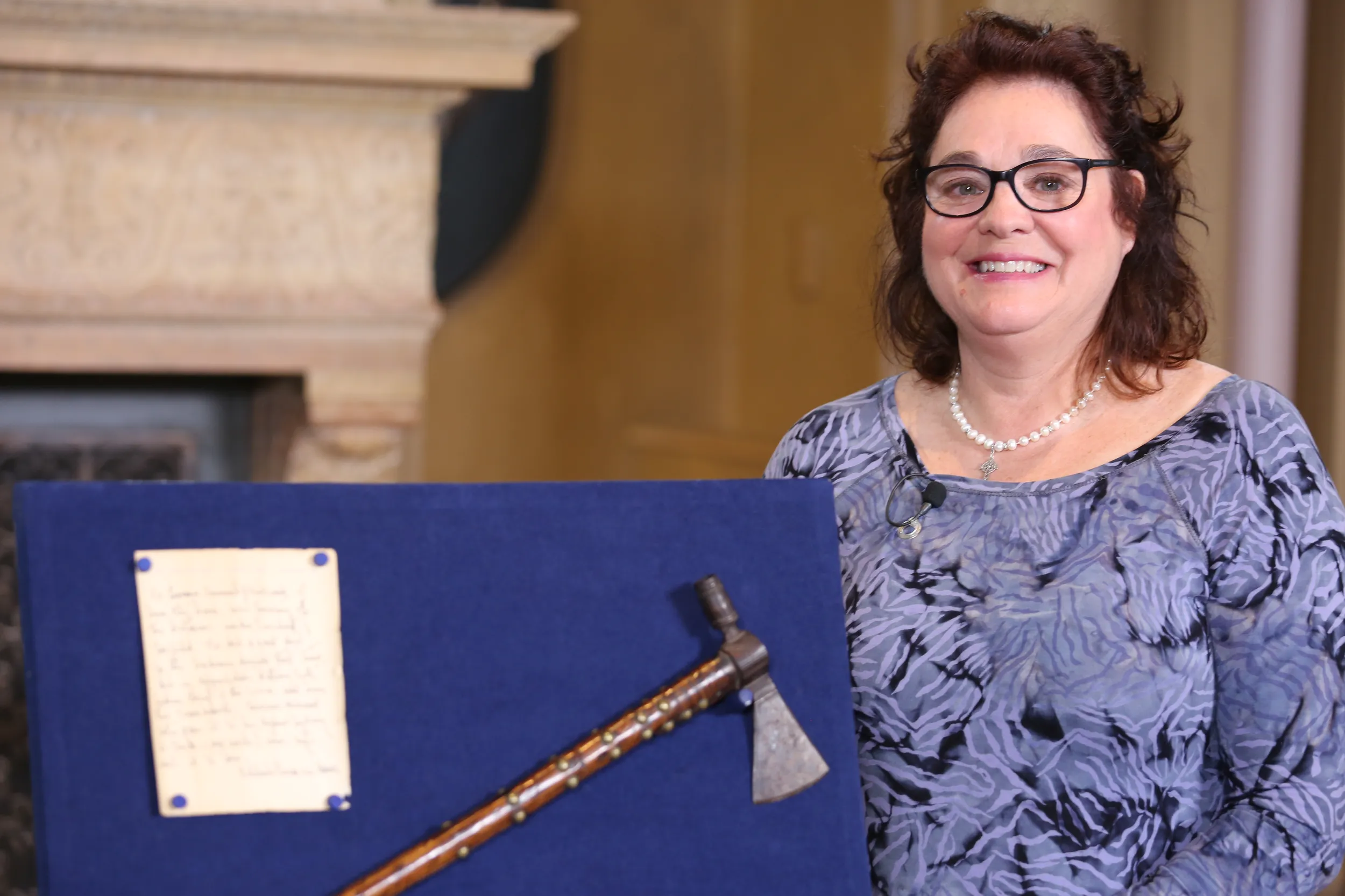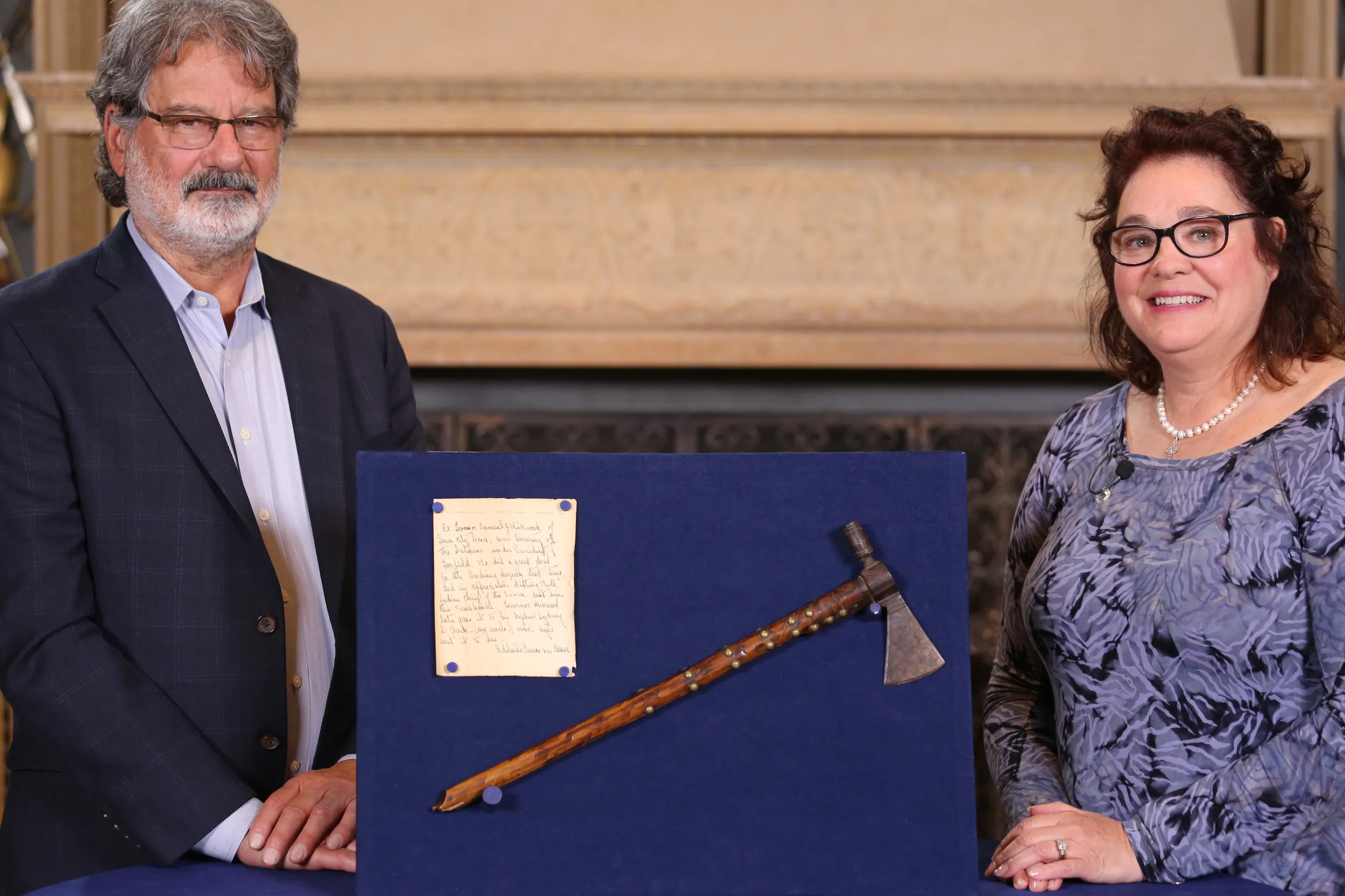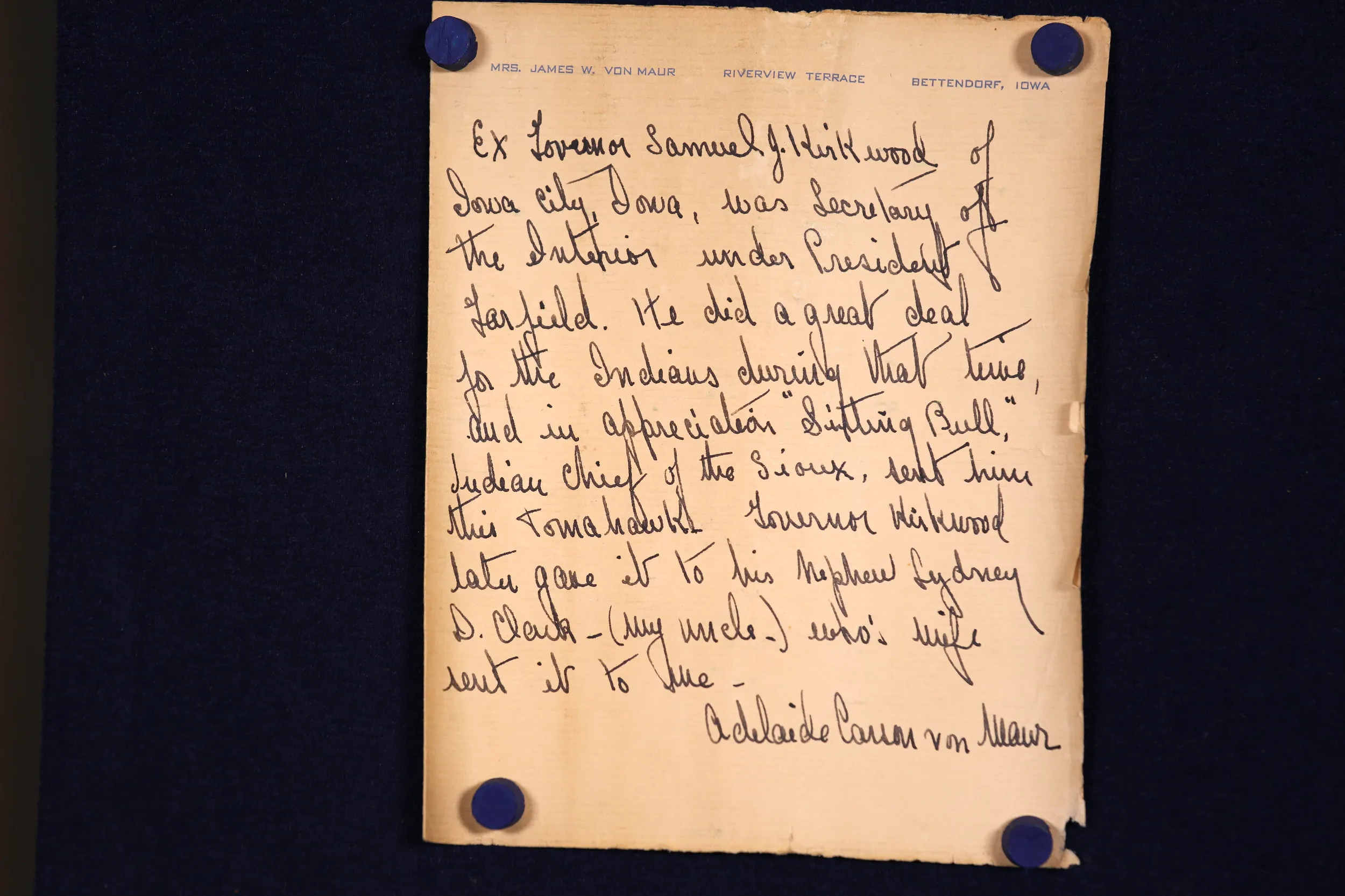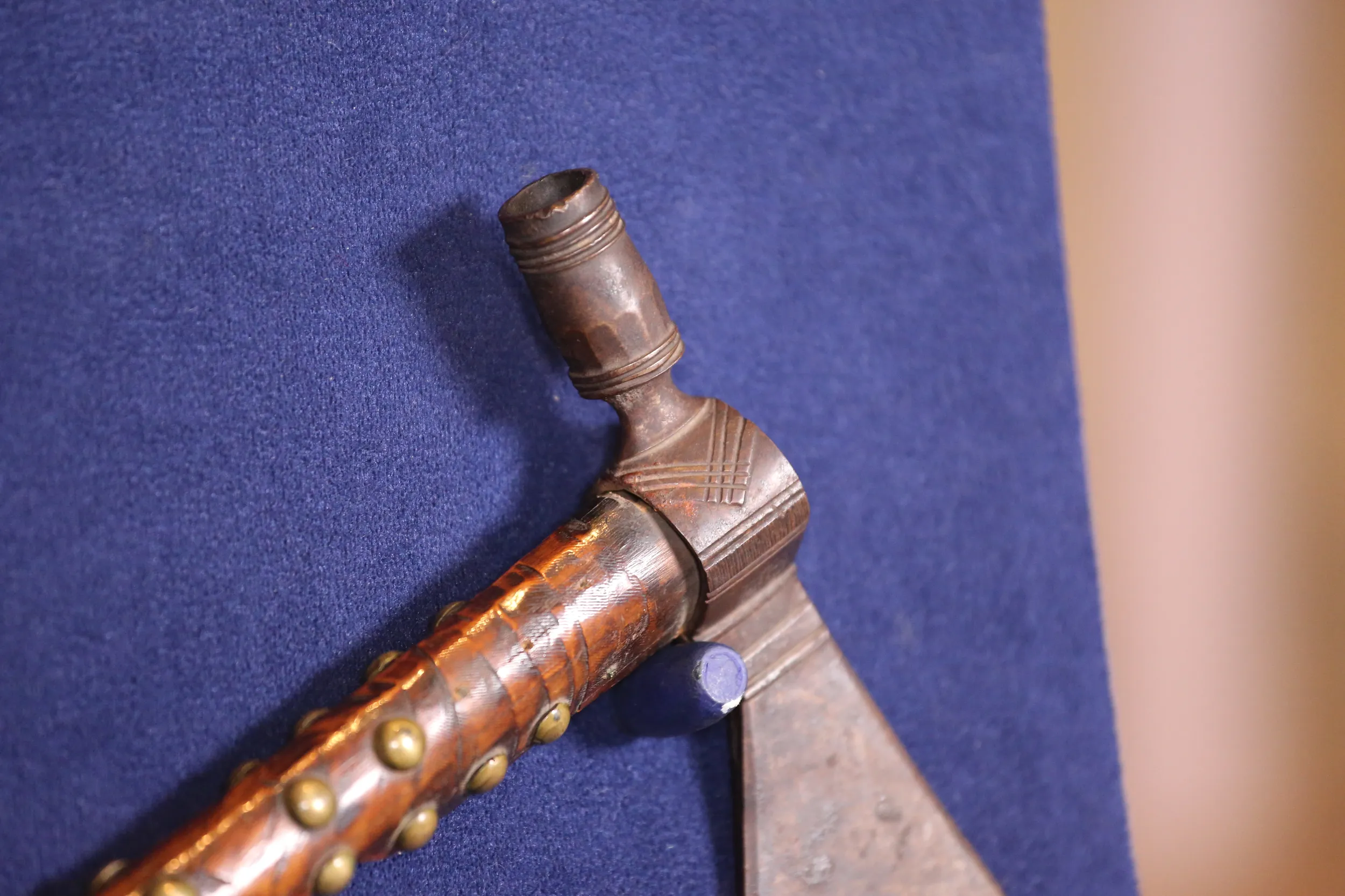GUEST: My grandmother had this all wrapped up in her closet. Samuel Kirkwood was my great-great-uncle, and he was the governor of the state of Iowa from 1860 to 1864. And then, I guess there was a hiatus, and again he was back being the governor 1876 through 1877. And, at some point, I guess he was very friendly with the Native Americans. He became the secretary of the interior under President Garfield, and Sitting Bull gave this to him as a thank you gift.
APPRAISER: The presentation tomahawk. It's a very important symbol of status, stature for a Native American man. A Native American man had to be a provider for his family. He had to father children, keep the tribe vital. And he had to protect and defend. And this is the object that it was... was utilized. It's both a weapon with a blade for striking, and it's a pipe for smoking.
GUEST: Oh.
APPRAISER: So, you have both war and peace...
GUEST: Okay.
APPRAISER: ...encapsulated in one object. The materials are a long, hard-grained wood, probably ash or hickory, for the haft. The head is brass.
GUEST: Okay.
APPRAISER: And that's important here. This is probably a tomahawk that was not utilized in warfare.
GUEST: Okay.
APPRAISER: However, it's made in a completely traditional fashion. The hickory haft is file-branded to develop different patterns to the wood.
GUEST: Okay.
APPRAISER: The brass tacks are trade items from a non-native trader. And, of course, the head is made by a blacksmith. The head would have had a leather gasket to keep it firm and secure. The hole through the haft of the tomahawk would have been fashioned from a hot wire, and it would have scorched the pith out of the interior of the wood, the heartwood.
GUEST: Okay.
APPRAISER: It dates, in my estimation, to the 1870s, maybe 1880. But the personages involved-- the governor, the president, Sitting Bull-- these were major figures. The president was assassinated six months after he became president.
GUEST: Mm-hmm.
APPRAISER: That's the second shortest term of a presidency in the United States' history. Sitting Bull, after fighting George Armstrong Custer at the Battle of the Little Bighorn in 1876, he went up into Canada, came back. He was captured, he was incarcerated, and, in, in the process of moving him out of a prison to another location, he was killed tragically. It's hard to evaluate such an important object, so historic. It has deep, rich patina. It's obviously been carefully taken care of. There's so much history in the document. You'll never want to lose that document. Always keep them associated. I think, on a retail basis, this tomahawk would sell for in the neighborhood of $12,500.
GUEST: Wow! Okay.
APPRAISER: It's terrific. I, I'm so happy you brought it.
GUEST: Well, thank you. I'm glad to show it to everybody.

